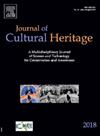Determination of baseline groundwater levels for tree conservation in urban historical botanical gardens using applied geophysics
IF 3.5
2区 综合性期刊
0 ARCHAEOLOGY
引用次数: 0
Abstract
Historical botanical gardens hold a significant place in cultural heritage. They serve as interpretive repositories of past botanical knowledge and practices, showcase plant collections cultivated over centuries, provide space for the emergence of new ecologies, offer numerous human well-being benefits, and supply vital regulating ecosystem services, which are especially important in urban areas. Nowadays, however, plants within urban historical botanical gardens can be at risk due to urban development. Therefore, it is crucial to achieve a comprehensive understanding of these spaces to help implement protective measures and support proper urban planning of the surrounding areas.
This study investigates the subsurface of the Botanical Garden of Lisbon (JBL), which is subject to nearby construction works that may alter groundwater flow and depth. We employed a methodology designed for minimal on-site disturbance and high adaptability to the spatial constraints typical of these spaces. Two non-invasive applied geophysical techniques were used: ground-penetrating radar (GPR) and electrical resistivity tomography (ERT). Our main objectives were: (1) to assess groundwater levels in the construction area and establish the piezometric surface, and (2) to determine if the tree-root zones reach the saturated zone, establish a groundwater baseline, and suggest protective measures.
The establishment of the piezometric surface and the delimitation of the tree-root zone, extending up to 3.0 m in depth, revealed that tree-root zones can reach groundwater levels. This finding underscores the critical need for vigilant monitoring and management of groundwater levels during excavation activities, as decreased lateral groundwater contributions from the potential excavation site can adversely affect groundwater levels in the plant beds.
These findings and methodology can be applied to urban botanical gardens worldwide, as many of these gardens face similar challenges due to urbanization and environmental changes.
应用地球物理学测定城市历史植物园树木保护的基线地下水位
历史植物园在文化遗产中占有重要地位。它们是过去植物学知识和实践的解释性宝库,展示了几个世纪以来培育的植物收藏,为新生态的出现提供了空间,为人类福祉提供了许多好处,并提供了重要的调节生态系统服务,这在城市地区尤为重要。然而,如今,由于城市的发展,城市历史植物园中的植物可能面临风险。因此,全面了解这些空间对于实施保护措施和支持周边地区的合理城市规划至关重要。本研究调查了里斯本植物园(JBL)的地下,该植物园受到附近建筑工程的影响,可能会改变地下水流量和深度。我们采用了一种设计方法,旨在将现场干扰降到最低,并对这些空间的典型空间约束具有高度的适应性。使用了两种非侵入性应用地球物理技术:探地雷达(GPR)和电阻率层析成像(ERT)。我们的主要目标是:(1)评估施工区域的地下水位并建立测压面;(2)确定树根区是否达到饱和区,建立地下水基线,并提出保护措施。通过测压面的建立和树根带的划定,树根带的深度可达3.0 m,树根带可达地下水位。这一发现强调了在挖掘活动期间警惕监测和管理地下水水位的关键必要性,因为潜在挖掘地点的侧向地下水贡献减少会对植物床中的地下水水位产生不利影响。这些发现和方法可以应用于世界各地的城市植物园,因为许多城市植物园由于城市化和环境变化而面临类似的挑战。
本文章由计算机程序翻译,如有差异,请以英文原文为准。
求助全文
约1分钟内获得全文
求助全文
来源期刊

Journal of Cultural Heritage
综合性期刊-材料科学:综合
CiteScore
6.80
自引率
9.70%
发文量
166
审稿时长
52 days
期刊介绍:
The Journal of Cultural Heritage publishes original papers which comprise previously unpublished data and present innovative methods concerning all aspects of science and technology of cultural heritage as well as interpretation and theoretical issues related to preservation.
 求助内容:
求助内容: 应助结果提醒方式:
应助结果提醒方式:


